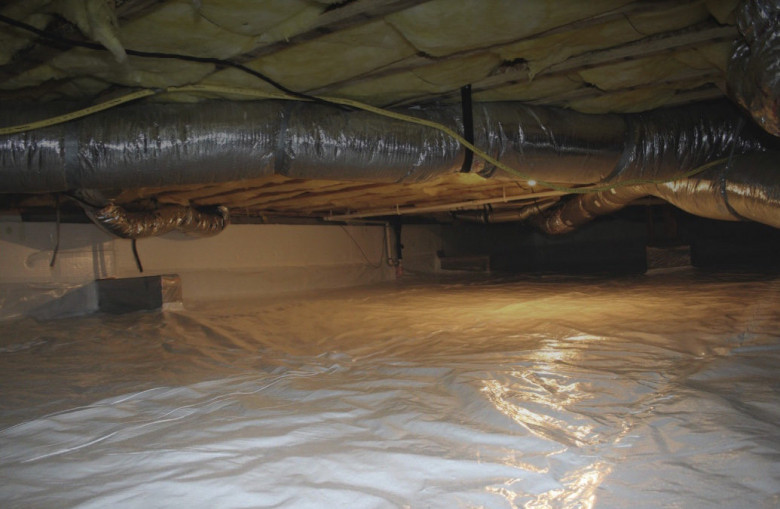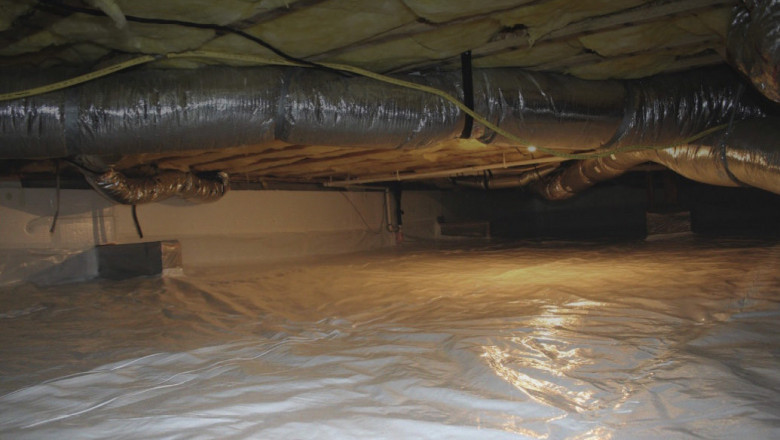views
Keeping your home safe, comfortable, and well-maintained starts from the ground up—literally. For many properties, crawl spaces are an important but often overlooked area. Unfortunately, they are also one of the most common sources of unseen damage caused by moisture buildup. Left untreated, crawl space moisture can lead to serious structural problems, compromised health conditions, and costly repairs. The good news? Solutions are available, and they’re more effective than ever.
Whether you’re a homeowner aiming to protect your property, a property manager looking out for tenants, or a building contractor seeking efficient solutions, this guide provides a complete overview of crawl space moisture issues and how to control them.
Understanding Crawl Space Moisture
Common Causes of Crawl Space Moisture
Crawl spaces, located beneath your home, are particularly prone to excess moisture for several reasons:
-
Improper drainage: Water seeping from rain or groundwater causes dampness.
-
High humidity regions: Homes in humid climates are more likely to encounter moisture problems.
-
Leaking pipes: Undetected plumbing issues can lead to water accumulation in crawl spaces.
-
Ventilation problems: Poorly ventilated crawl spaces trap moisture and prevent proper airflow.
Effects of Moisture on Homes and Health
Unchecked crawl space moisture can wreak havoc in several ways:
-
Structural damage: Moisture weakens the foundation, wooden beams, and floor joists over time, compromising the integrity of your property.
-
Mold and mildew growth: Damp environments encourage mold, which can spread to living spaces, taint air quality, and even damage belongings.
-
Health risks: Mold in crawl spaces may cause respiratory issues, allergies, or asthma for occupants.
-
Pest infestations: Damp crawl spaces attract termites, rodents, and other pests.
By understanding the root causes and potential damage, you can act before small issues become major headaches.
Signs of Crawl Space Moisture
How do you determine if your crawl space has a moisture problem? Here are some warning signs to look out for:
-
Persistent musty odors in your home.
-
Visible mold or mildew around walls, floors, or vents.
-
Sagging flooring above the crawl space.
-
Standing water or damp ground in the crawl space.
-
Increased pest activity in and around your home.
-
Condensation on pipes or surfaces within the crawl space.
-
Excessive indoor humidity, making living spaces feel uncomfortable.
If you notice any of these signs, it’s time to take action.
Solutions for Crawl Space Moisture
Tackling crawl space moisture issues requires a multi-faceted approach. Here are some of the most effective solutions:
Dehumidification Solutions
Installing a crawl space dehumidifier is an effective way to reduce excess humidity. Residential and commercial dehumidification systems work tirelessly to pull moisture from the air, creating a drier and healthier environment. Investing in an energy-efficient model is highly recommended, and smart dehumidifiers can be programmed for optimal performance year-round.
Moisture Barriers and Encapsulation
-
Crawl Space Moisture Barriers
Plastic sheets or vapor barriers are placed over the ground to prevent moisture from rising into the crawl space.
-
Crawl Space Encapsulation
A more comprehensive solution, encapsulation completely seals crawl space surfaces, including walls, floors, and vents, using durable materials. This airtight method effectively blocks moisture while improving energy efficiency.

The Role of Proper Ventilation
Providing adequate ventilation is essential for managing crawl space humidity. Options include installing mechanical ventilators, adjusting vents strategically to improve airflow, and using humidistats for measurable control.
Choosing the Right Solution
When selecting a solution, consider the following factors:
-
Climate: Is the home located in a humid or dry region? Areas with high humidity levels may require encapsulation coupled with a crawl space dehumidifier.
-
Budget: While moisture barriers are cost-effective, advanced crawl space encapsulation offers long-term value.
-
Severity of the problem: Minor issues may just need dehumidification, while advanced water damage often warrants professional assistance.
-
Expected use of property—Ask whether the residence sees regular or seasonal use.
Pro Tip
Many customers have cited success with moisture barriers combined with a high-quality crawl space dehumidifier. Testimonials from professional contractors often echo the importance of getting an inspection before proceeding with repairs.
Implementing the Solution
DIY Steps for Homeowners
For minor moisture issues, you may opt for a DIY approach by taking these steps:
-
Seal leaks or cracks using caulk or foam sealants.
-
Install a plastic vapor barrier over the ground for basic moisture protection.
-
Purchase and install a residential dehumidifier for simpler humidity control.
Professional Help Is Here
For extensive or recurring moisture issues, relying on professional services ensures comprehensive protection. Specialists offer moisture testing, encapsulation services, and continuous monitoring solutions.
CS Guardian
680 Reliance Rd Tellico Plains TN 37385
(423) 253-4939
Maintaining a Moisture-Free Crawl Space
Prevention is always better than cure. Here are some tips for maintaining a dry crawl space:
-
Inspect regularly for water intrusion, leaks, and pest activity.
-
Monitor humidity levels and ensure your dehumidification system operates effectively.
-
Keep gutters clear and ensure proper water drainage around your property's foundation.
-
Schedule annual professional check-ups to ensure encapsulation materials remain intact and effective.
Adopting these habits will help safeguard your crawl space for the long haul.
Protect Your Home by Solving Crawl Space Moisture
Maintaining a dry crawl space is not just about protecting your property; it’s about creating a safer, healthier environment for you and your family. By taking proactive steps—whether through dehumidification, crawl space moisture encapsulation, or professional assistance—you can avoid costly repairs and improve your home’s longevity.
Sound daunting? You don’t have to do it alone. Start by addressing crawl space moisture today—your home will thank you. If you found value in this guide, share it with a neighbor or friend who might benefit. Together, we can tackle crawl space issues head-on for safer homes and happier families.






















Comments
0 comment